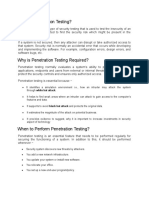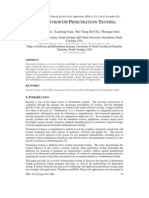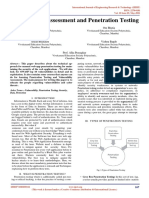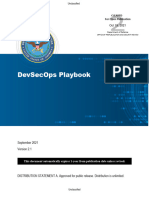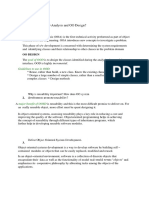0% found this document useful (0 votes)
30 views7 pagesPentration Testing
This document discusses the significance of penetration testing in cybersecurity, detailing its techniques, tools, and methodologies for identifying vulnerabilities in systems and applications. It emphasizes the business benefits of penetration testing, such as preventing financial loss and ensuring compliance with regulations, while also highlighting the importance of regular testing cycles and collaboration between development and security teams. A case study on an emotion-detection application demonstrates the practical application of penetration testing and the need for ongoing innovation in response to evolving cyber threats.
Uploaded by
shehroz tariqCopyright
© © All Rights Reserved
We take content rights seriously. If you suspect this is your content, claim it here.
Available Formats
Download as PDF, TXT or read online on Scribd
0% found this document useful (0 votes)
30 views7 pagesPentration Testing
This document discusses the significance of penetration testing in cybersecurity, detailing its techniques, tools, and methodologies for identifying vulnerabilities in systems and applications. It emphasizes the business benefits of penetration testing, such as preventing financial loss and ensuring compliance with regulations, while also highlighting the importance of regular testing cycles and collaboration between development and security teams. A case study on an emotion-detection application demonstrates the practical application of penetration testing and the need for ongoing innovation in response to evolving cyber threats.
Uploaded by
shehroz tariqCopyright
© © All Rights Reserved
We take content rights seriously. If you suspect this is your content, claim it here.
Available Formats
Download as PDF, TXT or read online on Scribd
/ 7


